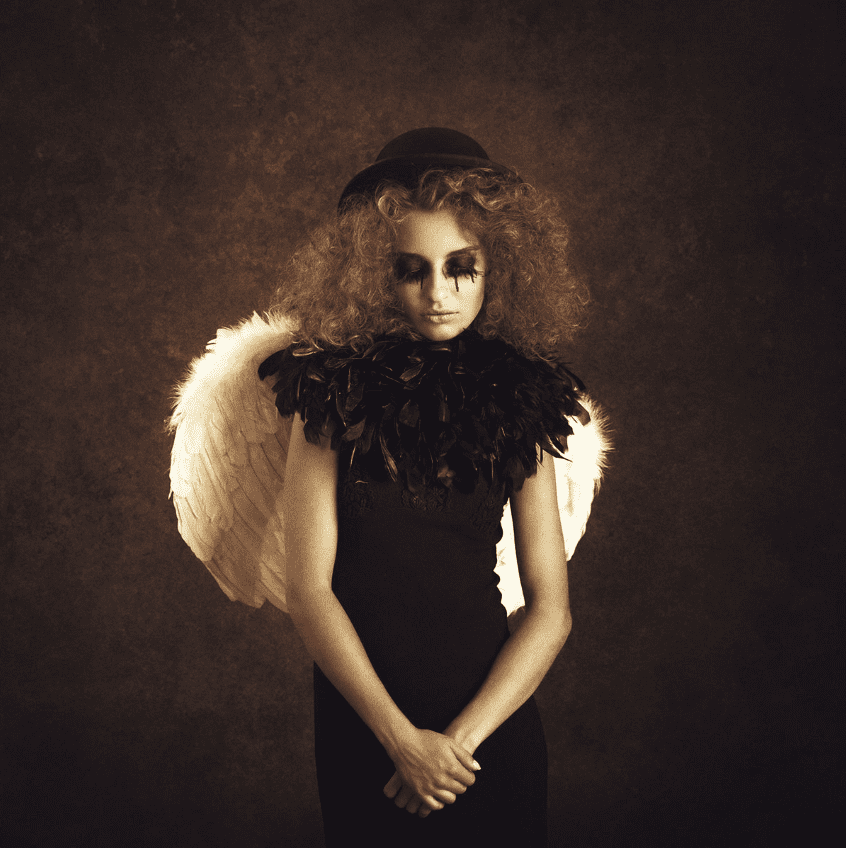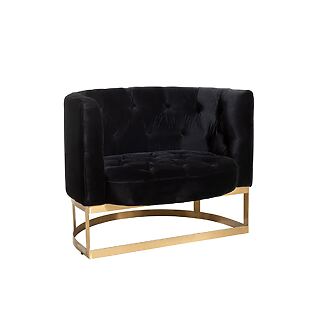The works of the Polish artist Katarzyna Kobro stand for the move of science into art. The sculptor and representative of constructivism was known to always reinterpret her works, making her accessible to a wide audience.
However, their works only made the big breakthrough after their death. A lot was destroyed or lost in World War II. After the war, she restored some works, a lot was only restored afterwards, based on corresponding documents from the time of the creation.
Who was Katarzyna Kobro?
Katarzyna Kobro was born on January 26, 1898 in Moscow and died on February 21, 1951 in Lodz. The Polish sculptor from a noble family had German-dated and Russian roots. Together with her husband Wladyslaw Strzeminski , Katarzyna Kobro is the key figure of constructivism and Central European avant -garde .

Kobro and Strzeminski had a common daughter, Jakobina (Nika) Strzeminska (1936 - 2001), the doctor became a doctor and later wrote biographical writings on the artistic work of her parents.
From 1917 to 1920, Kobro studied at the Moscow University of Painting, Sculpture and Architecture. Already as a student, she became a member of the union of visual artists in Moscow and exhibited her first sculpture in Smolensk, the "TOS 75 structure" . It was a merging made of metal , wood, cork and glass. At the end of 1919 she moved to Smolensk and married Wladyslaw Strzeminski in 1920.
Even in her studies, the artist showed interest in the construction of a work of art from abstract basic elements. She liked to work with mechanically prefabricated metals and glass. The technoid played an important role in her works. Their "floating construction 1" and "floating construction 2" are considered the first experiments of the kinetic sculpture in Poland and were reconstructed in the 1970s.
Together with Wladyslaw Strzeminski, Kobro was in contact with the most important representatives of the constructivist avant -garde in Europe. Georges Vantongerloo, Hans Arp and Constantin Brancusi were particularly taken with her .
Katarzyna KoBro and Wladyslaw Strzeminski spoke out in 1920 to the post -revolutionary Russian art of El Lissitzky and Kasimir Malewitsch . But at the turn of the year 1921/22, they strictly turned away from it. Where Kobro was still working for the theater of a Volksbildungshaus, her husband increasingly opposed the meager art world of the USSR and so they ultimately decided to escape to Poland, where Kobro received Polish citizenship in 1924.
Constructivist avant -garde in Poland
Wladyslaw Strzeminski worked as a painter, Katarzyna Kobro as a sculptor. The two developed new theories on modern art in Poland . Strzeminsiki received more attention than his wife, which was not least due to his more dominant personality and his great influence on many Polish artists.
For Kobro, art was a functional model of social life. Although she and her husband disagreed on this point, in 1931 they managed to agree in their most important common text. In "Composition of Space: Calculation of Space-Time Rhythm" you differentiate between flat painting from the three-dimensional architecture and sculpture.
Take a look at the video presentation by Michalina Kmiecik (Jagiellon University in Krakow) at the East Central European Center of the Harriman Institute. This event is part of the East Central Vanguard series series: New Perspectives on the Avant-Garde:
In contrast to painting, the architecture and sculpture looked organically connected in the room. The task of the modern arts is to develop their autonomy. In addition, she should work out her specific, clearly differentiated construction principles and components. For Kobro, this was the creation of sculptures in module form. Your field was the constructivist spatial concept. This makes her work typical of the Russian modernity in which geometry and basic forms are central; Objects, people, animals and landscapes, however, are missing.
Kobro put her sculptures together from equivalent elements into a form without the center, i.e. into a unistic sculpture. In the coloring, she opted for blue, red and yellow, black and white, silver or gray. The wandering look and the different colors of the sculpture elements result in the room time rhythm.
Kobro's claim was to always reinterpret art and present it to an ordinary audience through mass production - this was finally famous as a Polish constructivist avant -garde.
Kobro's work in the 1920s and 1930s
The most famous work of Kobros was created between 1925 and 1933 with the sculpture series "Space Compositions" (original title in Polish: "Kompozycja Przestrzenna"). Even if she mainly dealt with the creation of sculptures and sculpture, Katarzyna Kobro sometimes also designed posters or in 1929 participated in making pavilion at the Polish national exhibition
In 1926, Kobro's works were exhibited in Poland for the first time, as part of a larger Praesens exhibition in the Zachta gallery in Warsaw . Her work was not well received by the critics. These were of the opinion that a sculpture should consist of a solid mass. In addition, they couldn't do anything with Kobro's room interpretation. Kobro received support from Strzeminiski, who believed in her and insisted that her work should receive stronger attention and a fair evaluation.
From 1925 to 1930 KoBro made nine room compositions. Your claim was to distance yourself from the primary task of the sculpture to present body. It dismembered the compositions and used metal sheets, which she painted in different colors.
Except for the last room composition, all are based on a uniform numerical value and repeat certain proportions that correspond to the golden cut. The eighth composition made in 1932 is kept in white and represents the architectural expansion of the sculptures in the model.

Photo by Agata Zbylut I Iwona Demko, CC BY-SA 4.0, via Wikimedia Commons
This replica was manufactured on a scale of 5: 1 with regard to the replica of the original sculpture "Spatial Composition" from 1929, which is kept in the art museum in Łódź. In the background, the visual artists Iwona Demko and Agata Zbylut as well as curator Karina Dzieweczyńska can be seen, who implement the "Congress of the Dreamer" project in the El Gallery Art Center.
Works
In 1930 Katarzyna Kobro played a decisive role in the founding of the Museum of Modern Art in Lodz . In 1932 she became a member of abstraction création together with Wladyslaw Strzeminski. In 1936 she signed Siratos as a supporter of the Parisian Manifest Dimensionist by Karloy (Charles) . The manifesto wanted to promote the integration of scientific progress in art.
After the birth of her daughter, who was born too early, KoBro devoted himself more to housekeeping and had less time for art. Her sickly daughter needed a lot of attention. Kobro now made traditional works, but also an abstract act.
The family was on the run during the war . First they fled to Wilejka in the east after the National Socialists' invasion. 1940 - 1945 they were banished from Russia and returned to Lodz. There they discovered that the works of art they had left in the basement of their apartment were destroyed by the people who lived there during their absence.
After the war, Katarzyna Kobro's life was increasingly unstable . In 1947 she separated from Strzeminski, who unsuccessfully tried to withdraw custody for her daughter. She earned her low livelihood by making and selling toys. During this time she drew landscapes, still lifes, and portraits of her daughter.
In the Sztuki Museum in Lodz, she looked after the restoration of her sculptures, which had suffered considerable damage during the war. In 1948 she modeled in tone and took part in the first exhibition in the Sztuki Museum after the war. Five works were issued by her.
Due to an indictment for "deviation from Polish nationality" in 1949/50, it was sentenced to a six -month prison sentence from which it was released after an appeal.
After a serious illness, Kobro died on February 21, 1951 in a hospice in Lodz . In his lifetime, she was no longer able to celebrate significant success as an artist after the Second World War. After her death, art historians began to restore their works. The interest in Kobro's work and their influence on the artistic and social circumstances of their time continues to this day.
In 2011, Kobro's life was filmed . Nina Czerkies played the role of Kobros in the “Powidoki” television production. Maciej Wojtyszko directed.
What was the importance of the artist for the sculpture?
Kobro is of great importance for the constructivist avant -garde and is one of the most important sculptors of the interwar period . Since many of their works have been lost over the years, some were reconstructed on the basis of the documents from that time. The full extent of the meaning of Kobros for constructivism only became clear decades after her death when the art world increasingly dealt with its work after the opening of the East.
What influence did Katarzyna Kobro have on the art world?
The interest in Katarzyna Kobro's work and her contribution to constructivism continues to date. In the 1980s and 1990s, critics and academics were increasingly interested in life and works by Kobros. A feminist interpretation of Kobros and her work was also stimulated. During this time, her work was presented at various, especially international exhibitions.
Where are Katarzyna Kobro exhibited?
The works of Kobros are exhibited in the Museum of Modern Art in New York, for example, as part of the "Collection 1940S - 1970S" . also recently exhibited the Kunsthaus Stuttgart Most of Kobros can be found in the Sztuki Museum in Lodz.
Where are Katarzyna Kobro works of art to buy?
Kobro's works are sold at the common art auction houses . Among other things, their works are offered at Christie’s . In 1990 a sculpture from Kobro was auctioned there for the first time.

Owner and Managing Director of Kunstplaza. Publicist, editor, and passionate blogger in the field of art, design, and creativity since 2011. Successful completion of a degree in web design as part of a university program (2008). Further development of creativity techniques through courses in free drawing, expressive painting, and theater/acting. Profound knowledge of the art market through many years of journalistic research and numerous collaborations with actors/institutions from art and culture.

















